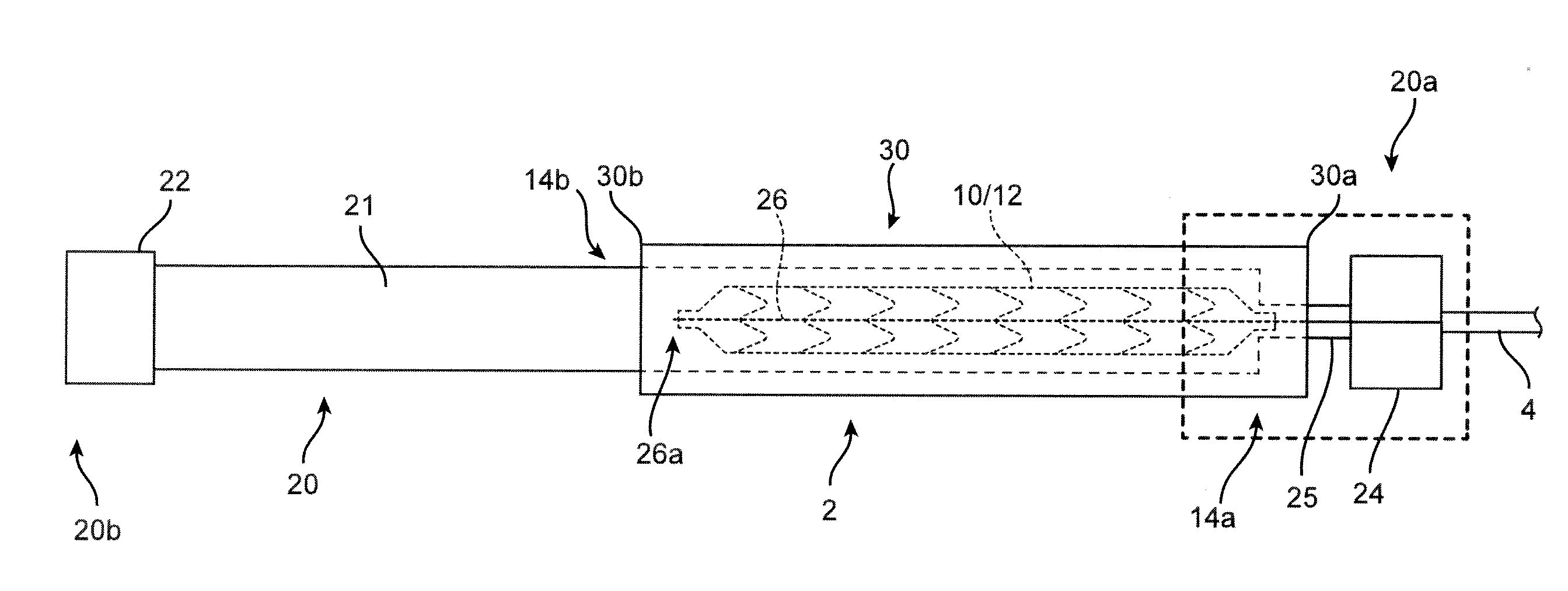Sheaths Used With Polymer Scaffold
a polymer scaffold and sheath technology, applied in the field of drugeluting medical devices, can solve the problems of many challenges to overcome, the scaffold made from such polymers also tends to be brittle or limited in fracture toughness, and the accepted process of metal stent handling cannot be used. , to achieve the effect of convenient removal
- Summary
- Abstract
- Description
- Claims
- Application Information
AI Technical Summary
Benefits of technology
Problems solved by technology
Method used
Image
Examples
Embodiment Construction
[0048]A polymer scaffold according to a preferred embodiment is formed from a radially expanded or biaxially expanded extruded PLLA tube. The scaffold is laser cut from the expanded tube. The diameter of the tube is preferably selected to be about the same, or larger than the intended deployed diameter for the scaffold to provided desirable radial strength characteristics, as explained earlier. The scaffold is then crimped onto the balloon of the balloon catheter. Preferably, an iris-type crimper is used to crimp the scaffold to the balloon. The desired crimped profile for the scaffold is ½ or less than ½ of the starting (pre crimp) diameter of the expanded tube and scaffold. In the embodiments the ratio of the starting diameter (before crimping) to the final crimp diameter may be 2:1, 2.5:1, 3:1, or higher. For example, the ratio of starting diameter to final crimped diameter may be greater than the ratio of the deployed diameter to the final crimped diameter of the scaffold, e.g.,...
PUM
| Property | Measurement | Unit |
|---|---|---|
| length | aaaaa | aaaaa |
| force | aaaaa | aaaaa |
| flexible | aaaaa | aaaaa |
Abstract
Description
Claims
Application Information
 Login to View More
Login to View More - R&D
- Intellectual Property
- Life Sciences
- Materials
- Tech Scout
- Unparalleled Data Quality
- Higher Quality Content
- 60% Fewer Hallucinations
Browse by: Latest US Patents, China's latest patents, Technical Efficacy Thesaurus, Application Domain, Technology Topic, Popular Technical Reports.
© 2025 PatSnap. All rights reserved.Legal|Privacy policy|Modern Slavery Act Transparency Statement|Sitemap|About US| Contact US: help@patsnap.com



